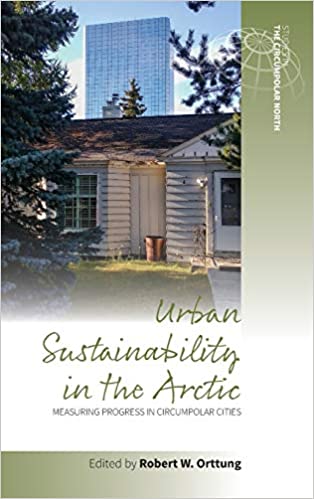A new book “Urban Sustainability in the Arctic. Measuring Progress in Circumpolar Cities” was published this summer by Berghahn Books. The book is edited by Robert W. Orttung and is a result of the Arctic PIRE project.
Urban Sustainability in the Arctic advances our understanding of cities in the far north by applying elements of the international standard for urban sustainability (ISO 37120) to numerous Arctic cities. In delivering rich material about northern cities in Alaska, Canada, and Russia, the book examines how well the ISO 37120 measures sustainability and how well it applies in northern conditions. In doing so, it links the Arctic cities into a broader conversation about urban sustainability more generally.
Stephanie Hitztaler and Veli-Pekka Tynkkynen wrote a chapter for the book titled “What Do ISO Indicators Tell Us about Corporate Social Responsibility and Sustainability in Cities of the Yamal-Nenets Autonomous Okrug, Russia?”
This chapter uses several ISO 37120 indicators to measure the contribution of corporate social responsibility to the cities of the natural-gas-producing Yamal-Nenets Autonomous Okrug. Some of the indicators show the benefits of such programs, especially in the area
of building new sports facilities. But despite this improvement in the sustainability ranking as measured by this indicator, the ongoing fossil fuel extraction and Gazprom’s overall impact on the area reduce the city’s sustainability. In this sense, ISO indicators can be cherry
picked in ways that are deceptive in terms of a corporation’s overall impact on urban sustainability.
You can learn more about the book and order it online from the publisher’s website.

